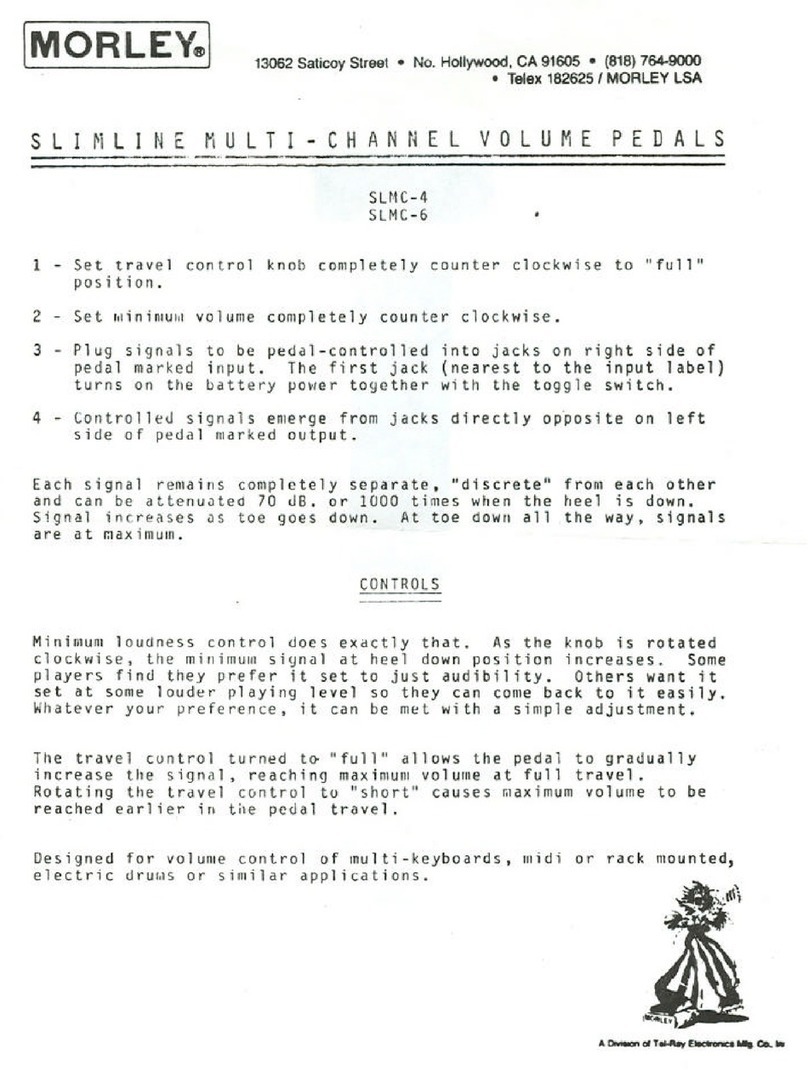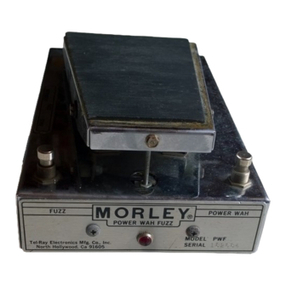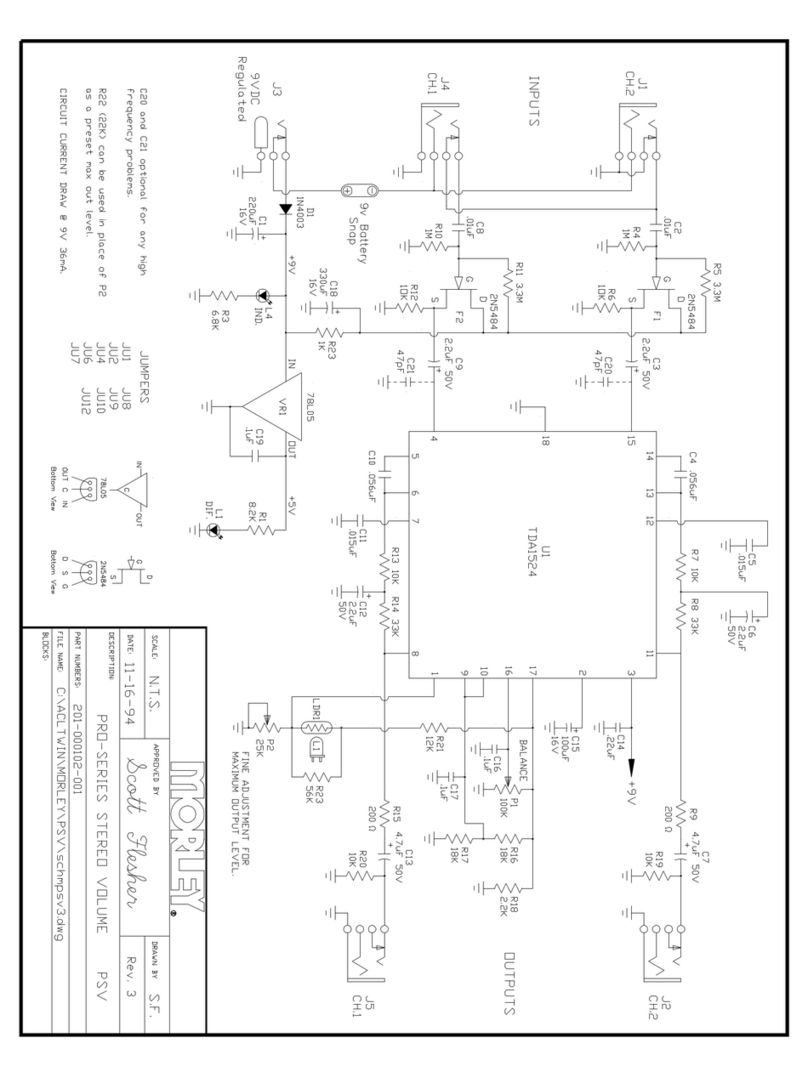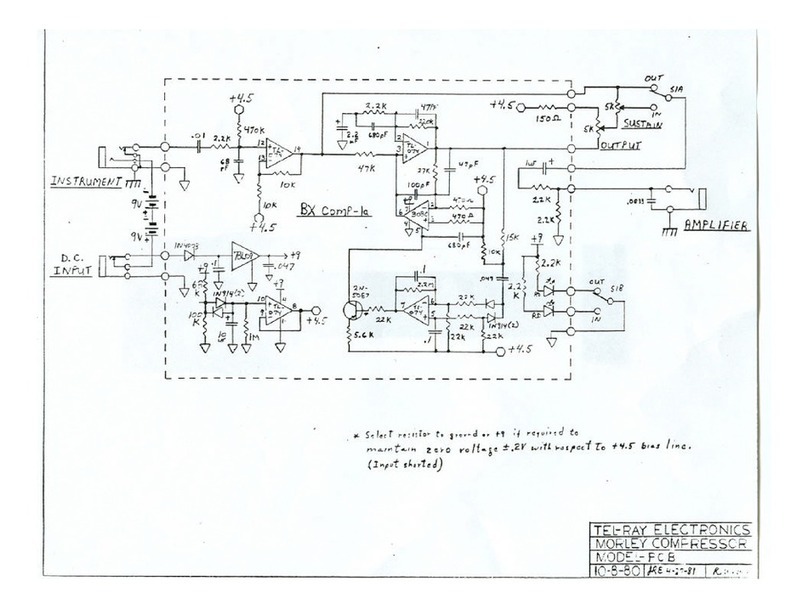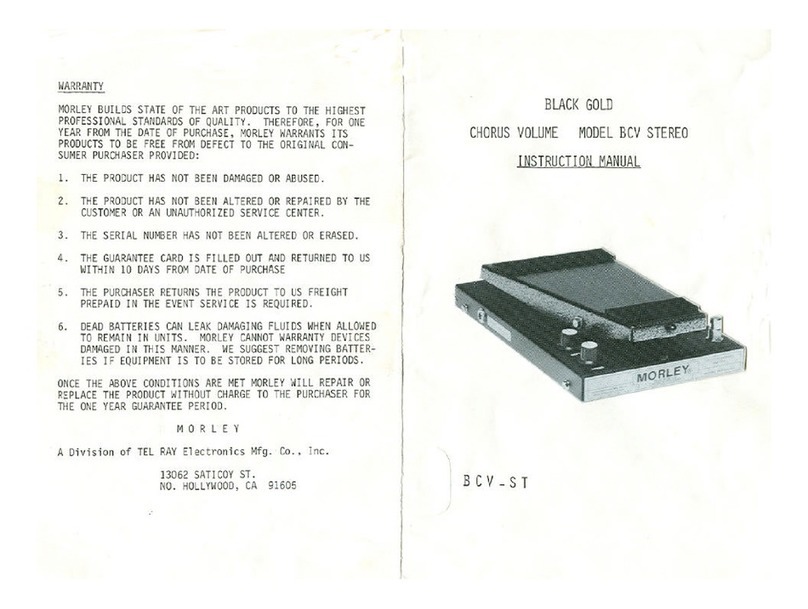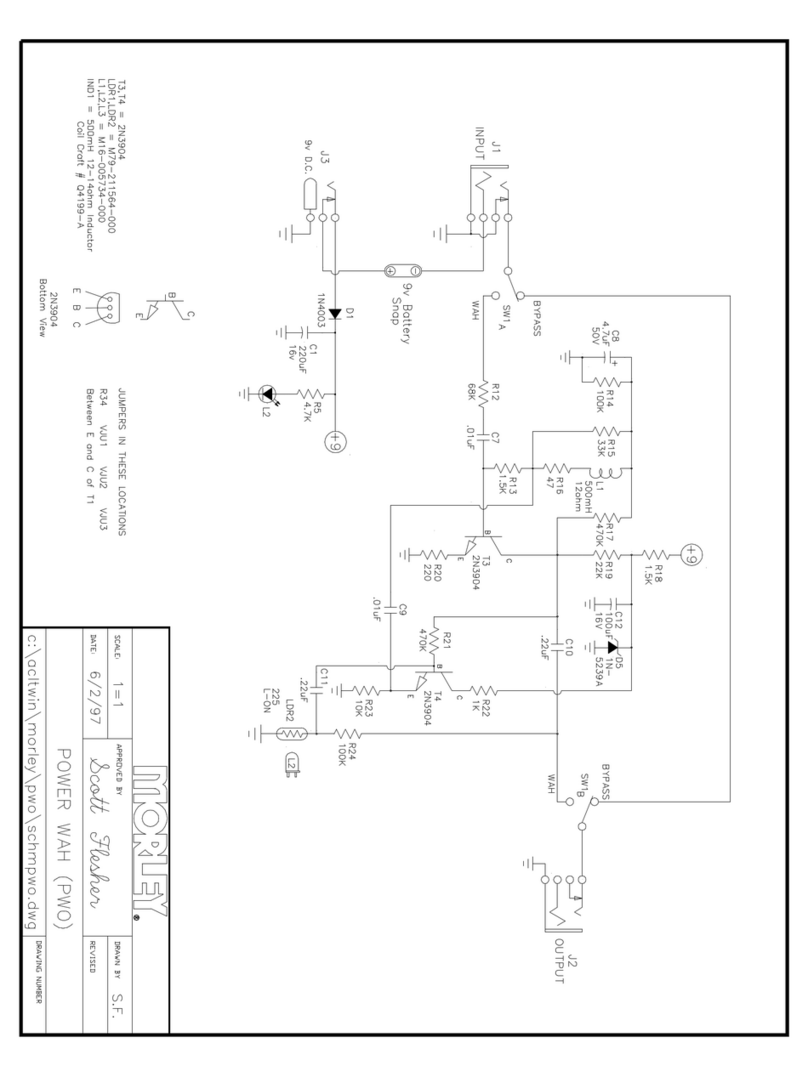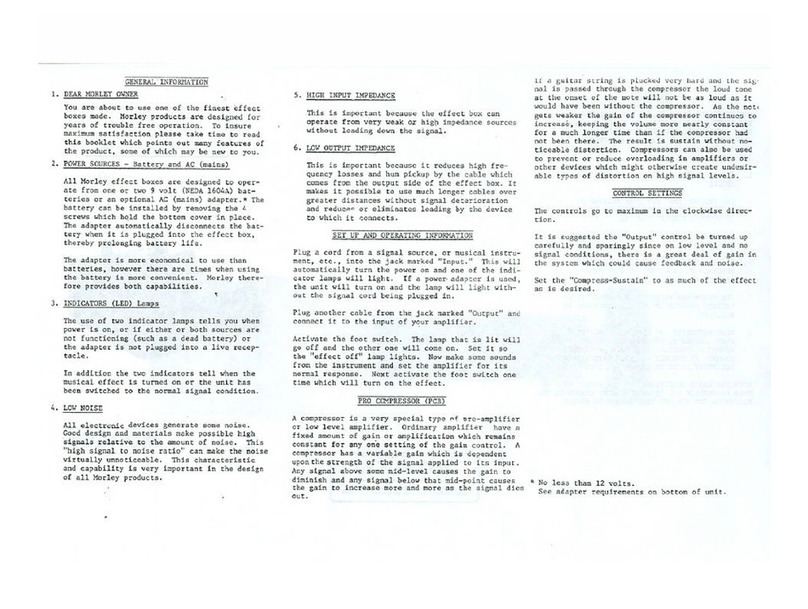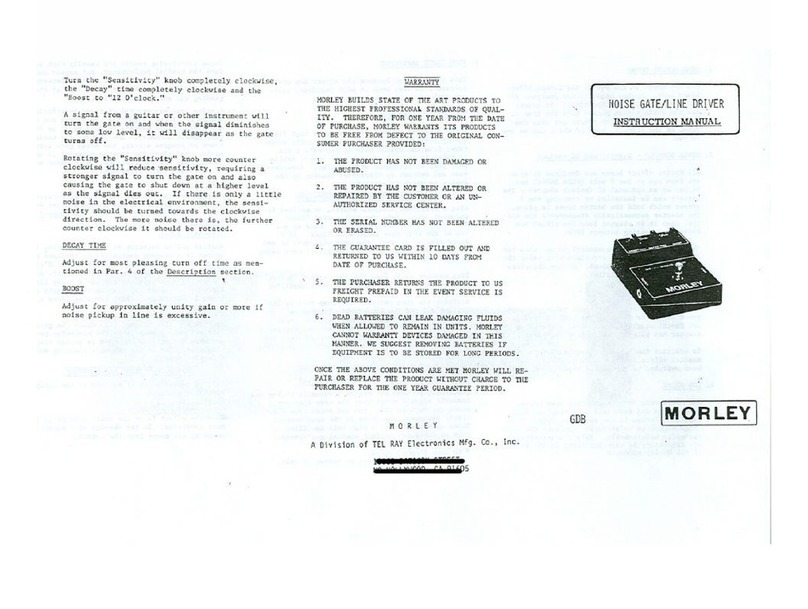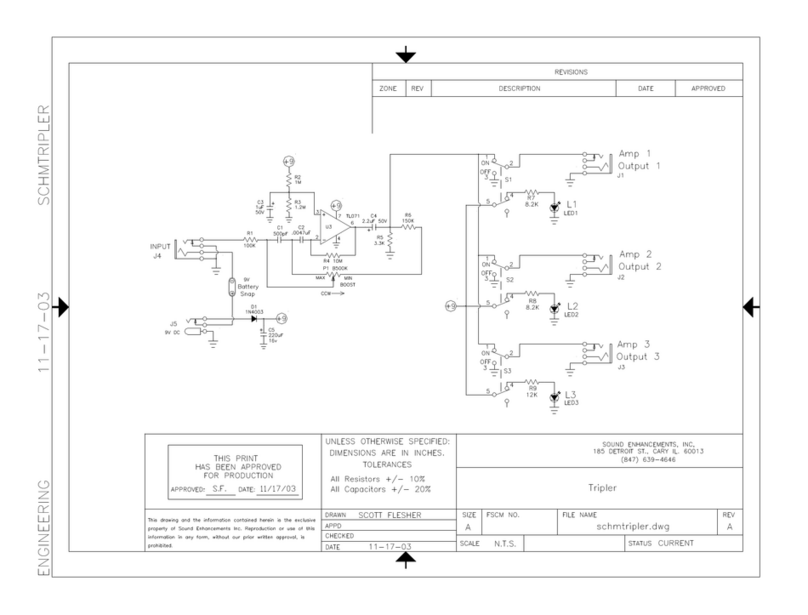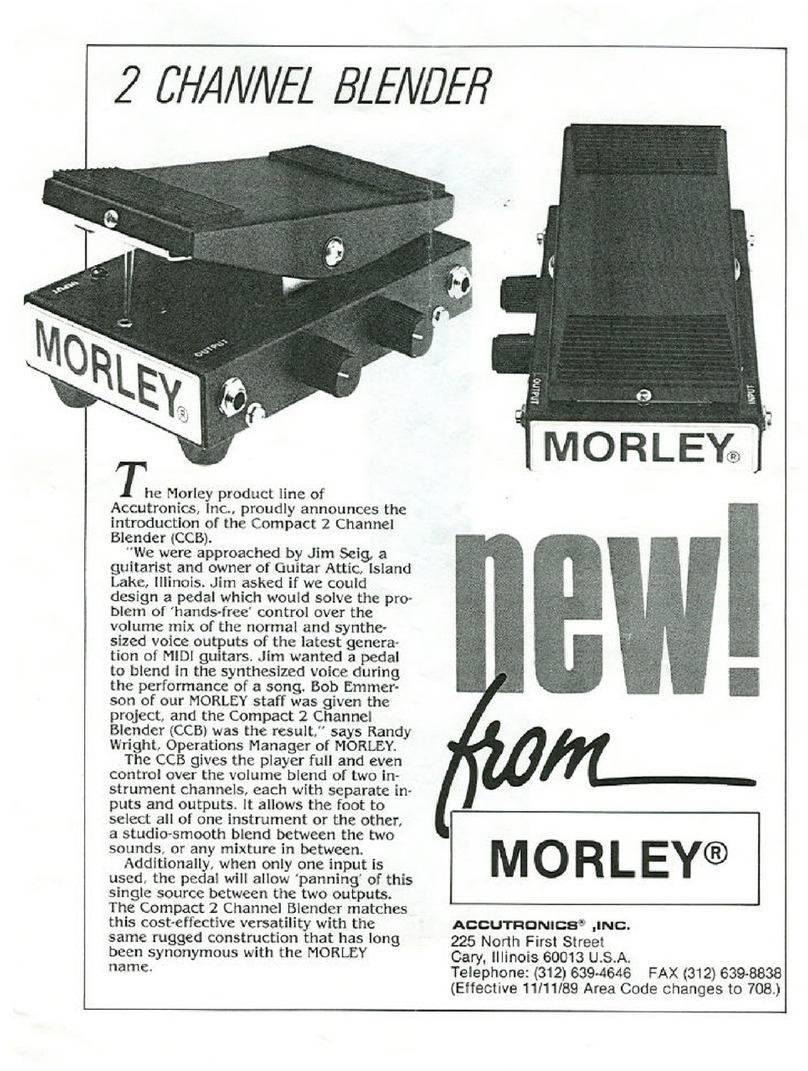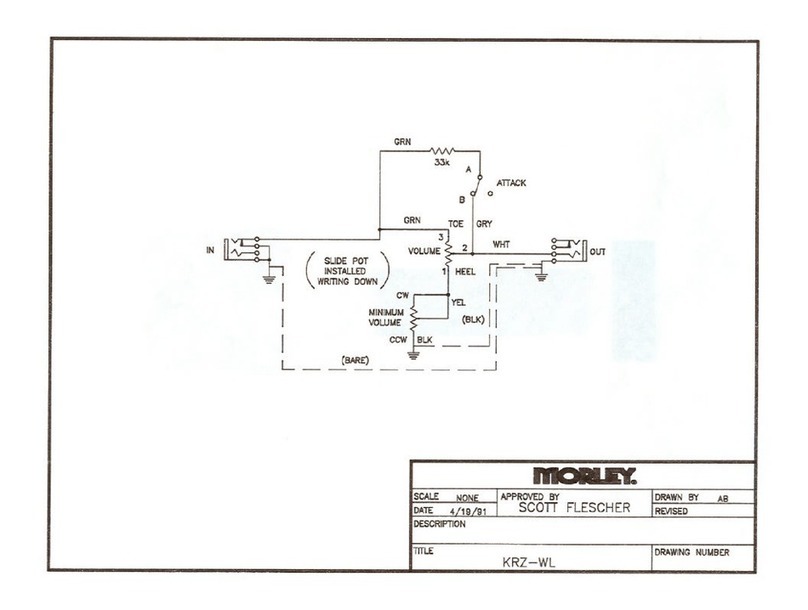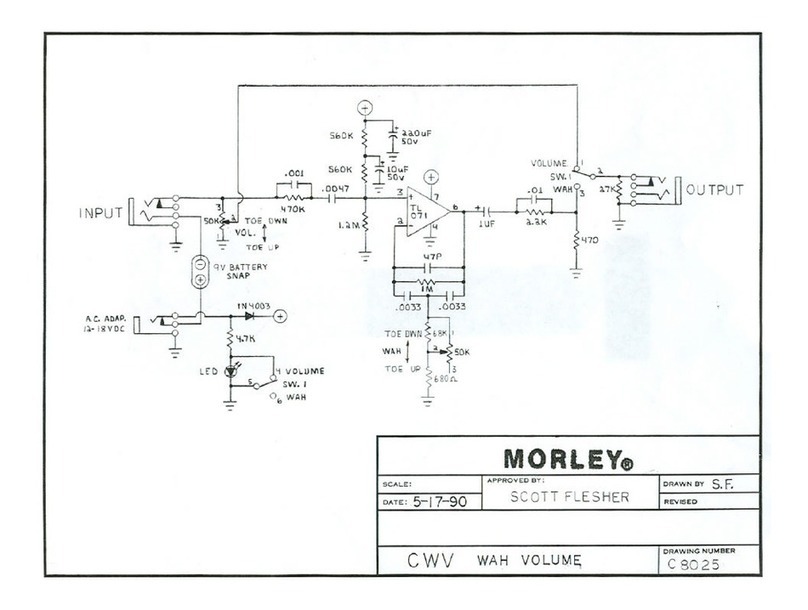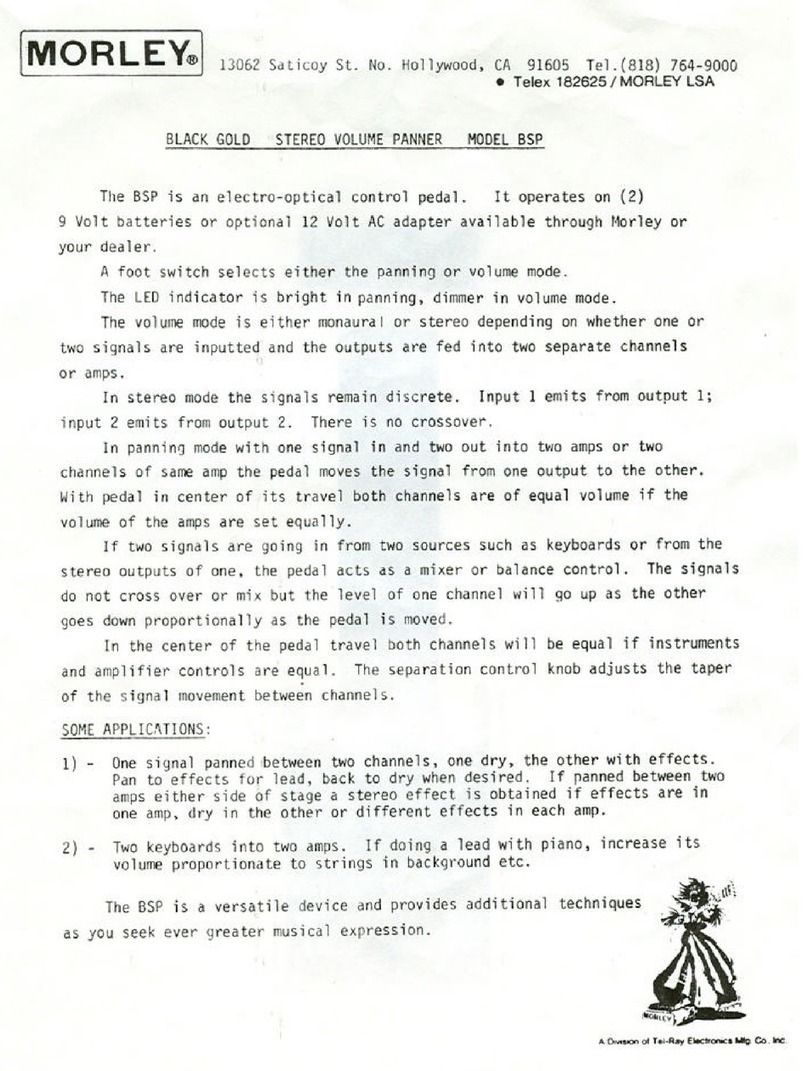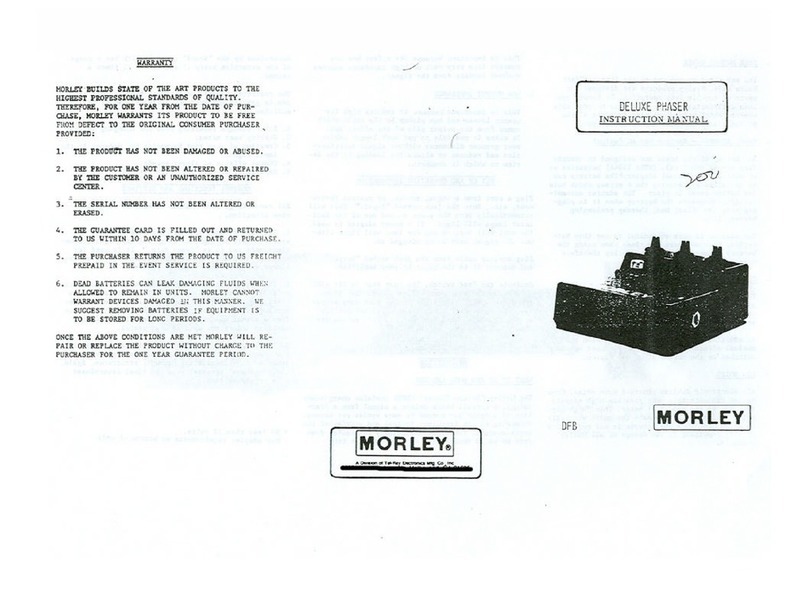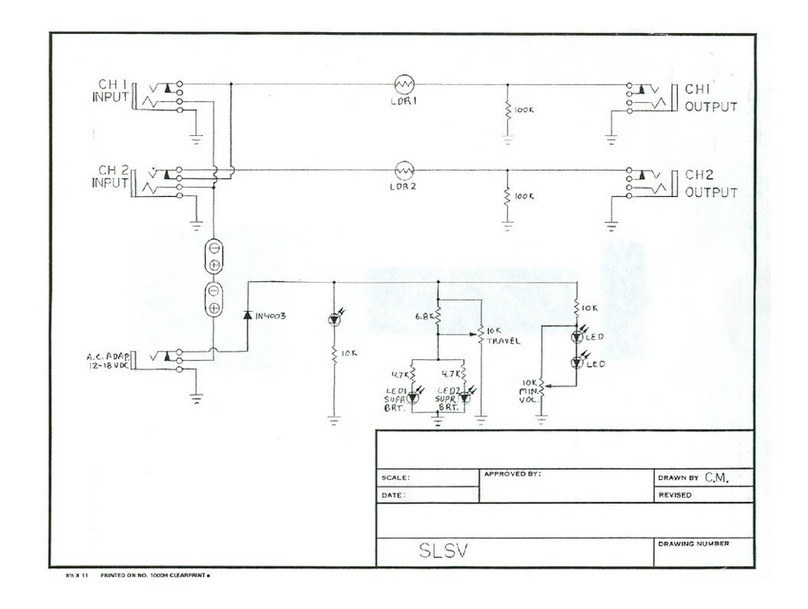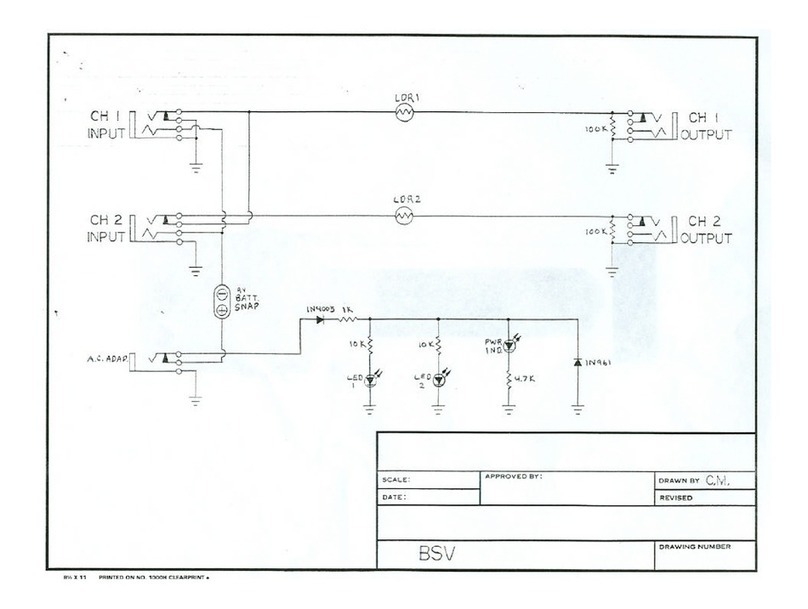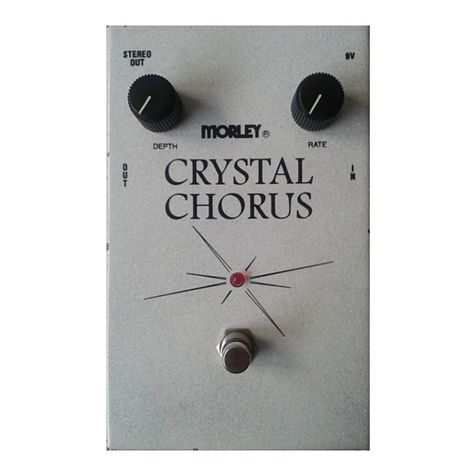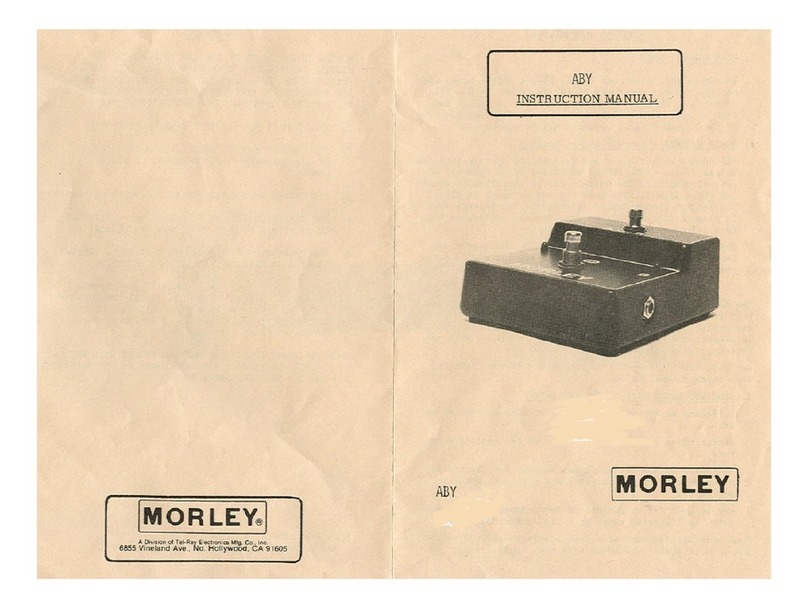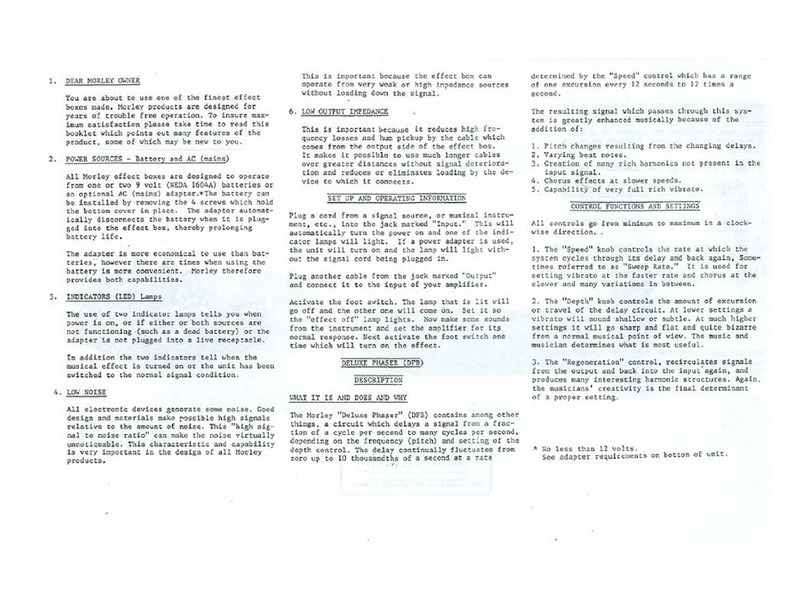THANK YOU!
For purchasing a Morley® pedal. You
now own the best Wah pedal made!
Please take a few minutes to familiarize yourself with
the features of your new pedal. With common sense
handling, it should last for years. We know you will
appreciate the rugged construction of your Morley®.
Most of all, we hope you enjoy using it as much as we
enjoyed building it.
OPERATION
VOLUME MODE: The pedal will be in volume
mode when both the LED above the WAH switch
and the LED above the Distortion switch are off. The
Volume mode has been specifically designed for
gradual volume increases as the pedal is moved from
“off” (toe-up) to “mid-travel” (halfway between toe up
and toe down). From “mid-travel” to “full on” (toe
down) the volume increases faster. This audio taper
combination gives you majestic volume swells - great
for pedal steel effects - when using the pedal travel
(toe up or toe down) or subtle volume change with
slight pedal movement. The pedal should be plugged
in directly after your instrument and before devices
that add gain (pre-amps, distortion and overdrive
effects). Plugging into the pedal after these devices
may cause unwanted volume in the “off” position.
NOTE: How fast you move the pedal affects how
the volume increases. The slower you move the
pedal, the smoother the volume increase.
WAH MODE: The Wah Mode is activated by
pushing the Wah switch (a red LED, located above the
WAH switch, will light when it’s “on”). With this
new series, we’ve maintained the full, thick sound and
wide bandwidth of previous Morley WAH pedals and
added more reactive sound. Now you can make your
guitar talk and sing similar to the sounds of Hendrix,
Clapton and other greats of the 60’s and early 70’s.
DISTORTION MODE:
The Distortion is activated by pushing the Distortion
switch (a red LED located above the switch will light
when it’s on). Three controls - Drive, Tone and Level
- allow you to dial in the right sound. While other
tone controls cut out the highs, ours, with a 1.5K-Hz
pivot point, varies the slope of the frequency
responsive curve. Turning the tone control left from
12 o’clock (mid) position will boost the lows and
reduce the highs; turning the control right from mid
position boosts the highs and slightly reduces the
lows.
COMBINATIONS: You can use the PDW for the
following combinations of effects:
- Volume only
- WAH only
- Distortion only
- Distortion with volume control
- Distortion with WAH
CONNECTIONS
9V: Use Morley’s 9 VDC 300 milliamp regulated
adapter only.
IN: Input jack. Plug instrument into this jack using
1/4” guitar cable.
OUT: Connect amplifier to this jack using a 1/4”
guitar cable.
NOTE: You’ll find cords fit very tightly into our input
and output jacks. The tight fit helps prevent the cord
from becoming accidentally unplugged from the
pedal. Make sure the cords are completely plugged in
for best results. AC ADAPTER
Use Morley’s 9VDC 300 milliamp regulated adapter
only. Using a non-regulated adapter could cause a low
frequency hum in your amplifier and may damage the
pedal. BATTERY
The PDW is designed to use one 9 volt battery when
not using an adapter. We suggest you use a good
quality alkaline battery.
To prolong battery life, unplug your cord completely
from the input jack when not using the pedal. When
the pedal is not used for extended periods, we
recommend you remove the battery from the pedal or
replace it every six months to prevent leakage
problems.
BATTERY REPLACEMENT
When the battery becomes weak, the overall wah and
distortion effects will become weak.
Remove the battery door located on the bottom of the
pedal (a short cord is attached to the door to help
prevent loss). Once the door is off, the old battery can
be removed from the battery snap and a new battery
plugged in. Make sure the polarity (+/-) is correct
before inserting the new battery.
When you replace the battery door , you will notice it
fits very tightly against the battery. This prevents the
battery from rattling inside the pedal.
WARRANTY
All Morley® pedals are warranted for two years from
date of purchase. To obtain warranty service contact
the store where purchased, or call 1-800-639-4668.
NOTES:
1. Using the PDW distortion mode at maximum
setting when your amp is in distortion or high gain
may cause uncontrolled feedback or a high pitched
squeal..
2. When using the Drive and Level controls at
maximum settings, some cross-talk may occur in
volume mode.
3. If the TONE control is set to full when using both
the Wah and distortion modes, the overall sound will
be particularly bright and brittle.
SPECIFICATIONS
POWER: 9 Volt Battery or Morley’s 9VDC 300
milliamp regulated adapter (center pin is negative)
CURRENT DRAW: 15 mA @ 9 VDC
WEIGHT: 3.1 lb./ 1.36 kg
INDICATOR: Wah mode; Wah LED on
Distortion mode; Distortion LED on
Volume mode; Both LED’s off
